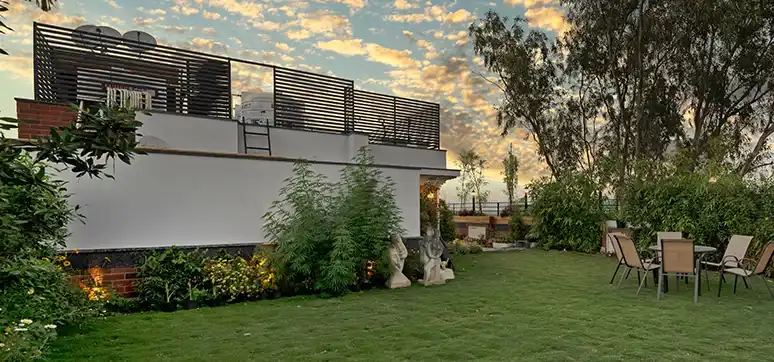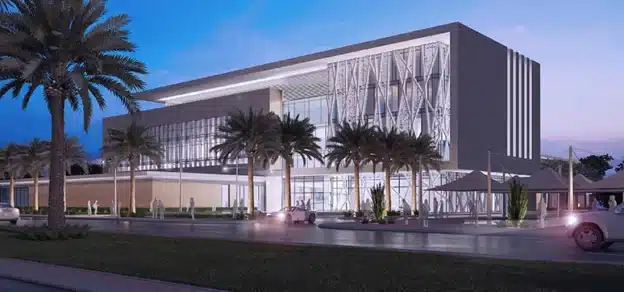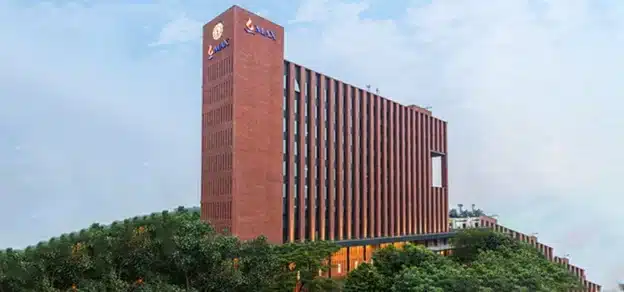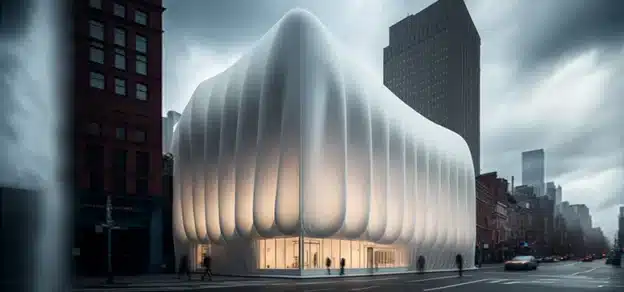Nature has long been used as a source of inspiration for architecture. Whether from its shape, the extraction and use of its materials, or even the incorporation of natural processes in the building technologies, it is always relevant to look for relations between the built environment and nature.
Today, biophilia is a thriving design practice focused on maximising our exposure to the natural environment by tapping into multi-sensory experiences, through inspiration from nature. Ar. Amit Gulati, Founding Partner at Design 21, shares his insights on the relationship between nature and architecture and the significance of blending nature into design.
Nature-Inspired Forms and Patterns

Nature-inspired forms, known as biomorphic forms, are the representation of shapes and patterns that persist in nature. Since the emergence of parametric design in architecture, biomorphic patterns are being largely used in building forms and façades.
It is proven to create a visually preferred environment that boosts the cognitive performance of the inhabitants and helps in maintaining better mental health. Today, contemporary architecture and biophilic design have introduced more organic building forms inspired by natural elements that include plants, leaves, trees, wings, etc.
Incorporate Natural Materials
Bridge the gap between architecture and nature through the use of natural materials such as wood, bamboo, jute, cork, and clay that would also elevate the elegance of a space. Whether in the exterior building envelope or interior space, integrating natural materials brings one closer to nature, improving their overall well-being.
Elements such as raw, natural wooden furniture, or bamboo battens on the roof, instill a vibe of nature and add a personality to the space. Façade using natural and recycled materials such as clay tiles and AAC blocks create a unique visual identity for the building as well as contribute to sustainability.

Embrace Natural Tones and Textures
Sometimes, nature can be infused into the built environment without the use of natural elements or materials. Furnishing with hues from nature is a subtle way to seed a natural aura into any space. Consider using blue, brown, or green subdued tones as they are soothing yet create a bold and saturated feeling. A great way to embrace nature is to embellish the walls using wallpapers of natural patterns. Layering all these colours and textures makes the layout look stylish while rejuvenating the mood and well-being of the residents.
Let Nature into Built Forms

Incorporating green plants is one of the most common ways of bringing nature into architecture. Green façades and roofs instinctively lend an aesthetic appeal to the buildings as well as help in improving the comfort and wellness of the occupants.
Decorating the interiors with green plants uplifts the mood and promotes human well-being. It is also evident that including water features in planning avails a sense of relaxation in body and mind, a small pond or a water fountain outdoors is enough to take you to the zen mode.
Biophilic Design in Future Workplaces
With the unprecedented changes in our lifestyles, homeworking and home offices have become convenient workplaces if done up right. The new-age offices are in immediate need to adapt to the changing needs of the people and reimagine the work environment. Biophilic design is one of the ways to regain office culture. Integrating biophilic elements in the workplace has proven to encourage enthusiasm, improve physiological stress, and increase productivity while fostering connectivity.
We often get disconnected from our natural surroundings in an urban technological world. The burgeoning demand and excitement for the design have led architects and designers to trace the part of nature-inspired design in architecture, through which buildings improve human capacity, enhance creativity and mental restoration, and expedite healing.
Ar. Amit Gulati advocates a more humanistic approach to design and celebrates how we live, work, and learn with nature. Let us get inspired more by nature and create healthy architecture for the future.














